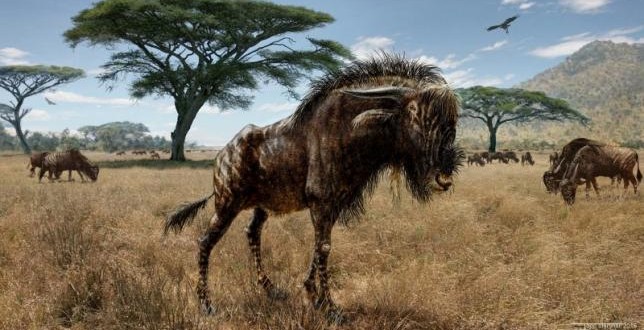An ancient “wildebeest” shared a bizarre feature with herd dinosaurs that lived tens of millions of years before it, say scientists.
Researchers say both were equipped with a nasal “trumpet”. And it may sound a bit unusual – but it was pretty nifty. It may have allowed them to communicate with other wildebeest over long distances.
In the case of the Rusingoryx atopocranion (that’s the ancient wildebeest FYI), its dome-shaped nose cavity is thought to have generated a very low near-infrasound voice.
Their apparently deep-throated calls might have been below the hearing threshold of potential predators. This helped the animals avoid discovery.
The ancient wildebeest were little known. And they lived way-back – in the late Pleistocene era that extended from around 126,000 to 11,700 years ago.
Scientists were astonished when they examined several intact skulls of the hoofed beasts recovered from Rusinga Island on Lake Victoria, Kenya.
Haley O’Brien, a member of the team from Ohio University in the US, said: “The nasal dome is a completely new structure for mammals – it doesn’t look like anything you could see in an animal that’s alive today.
“The closest example would be hadrosaur dinosaurs with half-circle-shaped crests that enclose the nasal passages themselves.”
Hadrosaurs were sometimes called the “cows of the Cretaceous”. They were plant-eating “duck-billed” dinosaurs, common around the world 70 million years ago.
They’re thought to have lived in large herds, just like modern wildebeest. And some species may have produced loud trumpeting calls – using their huge hollow head crests. Instead of, you know, actually using trumpets.
These findings are reported in the journal Current Biology.
Agencies/Canadajournal
 Canada Journal – News of the World Articles and videos to bring you the biggest Canadian news stories from across the country every day
Canada Journal – News of the World Articles and videos to bring you the biggest Canadian news stories from across the country every day



